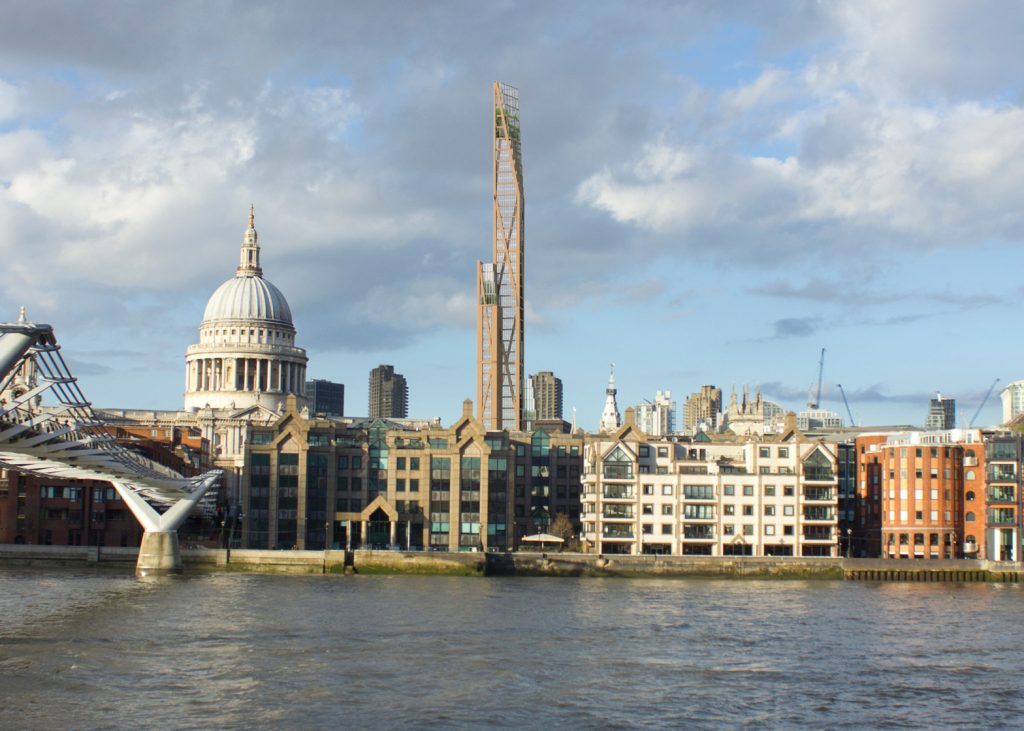The Toothpick: Wooden Skyscraper on Top of Barbican Could Become Britain’s Second Tallest Building
The London skyline has seen the Shard, the Gherkin and even the Cheesegrater. It could now include something even more extraordinary: The Toothpick, a giant skyscraper made of wood.
Plans for London’s first timber skyscraper were presented to the Mayor of London Boris Johnson this week with researchers saying natural materials were “vastly underused”.
They added that wood could revolutionise construction in the 21st century in the same way steel, glass and concrete revolutionised buildings in the 19th and 20th centuries, creating Crystal Palace and the Parisian arcades.
The design is for an 80-storey, 300m-high wooden building integrated into the Barbican complex. The tower would create 1,000 new residences. Architects’ Journal described the concept scheme as “toothpick-like”.
Currently, the worlds tallest timber building is a 14-storey apartment block in Norway, which would be dwarfed should Johnson approve plans for London’s timber skyscraper. It would be the second tallest building in the capital, only shorter than the Shard.
PLP Architecture has teamed up with researchers from Cambridge University’s department of architecture and engineers Smith and Wallwork to draw up proposals for the development of tall timber buildings in central London.
The Cambridge researchers wrote: “The use of timber as a structural material in tall buildings is an area of emerging interest for its variety of potential benefits; the most obvious being that it is a renewable resource, unlike prevailing construction methods which use concrete and steel.”
They added that the research also investigated other potential benefits such as cheaper costs, less time for construction and lighter buildings.
Michael Ramage, director of Cambridge’s Centre for Natural Material Innovation, said: “The Barbican was designed in the middle of the last century to bring residential living into the city of London, and it was successful.
“We’ve put our proposals on the Barbican as a way to imagine what the future of construction could look like in the 21st century.”
Dr Ramage continued that if London was to survive it needed to “increasingly densify. One way is taller buildings. We believe people have a greater affinity for taller buildings in natural materials rather than steel and concrete towers.”
Rather than simply copying steel and concrete buildings but using wood, the architects believe they could create new designs with the material.
The wood used in such buildings is regarded as a “crop” with the crop forest expanding. Canada alone produces 15bn m3 in the next 70 years, the researchers said – enough to house a billion people.


